Polygraph Parts Information
you will learn about the diffrerent parts of thpolygYou will learn about the different parts of a polygraph machine. We will showcase images and labels of the various components of the polygraph to help you identify and understand the different parts and their functions. You will be able to see the sensors, wires, and other components that make up the polygraph and how they work together to measure physiological responses.
By showcasing the parts of the polygraph, you will be able to gain a deeper understanding of how this complex machine operates and how it is used in various fields such as law enforcement and psychology. Whether you are a student, a professional, or simply curious about the workings of the polygraph, this showcase will provide valuable insights into this fascinating technology.
Arm Cuff Description
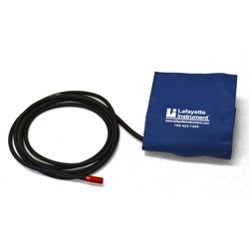
Overview
The Arm Cuff is a part of a polygraph machine that is used to measure the subject's blood pressure during the test. It is placed around the upper arm and is inflated to restrict blood flow, allowing the examiner to measure changes in blood pressure as a response to questions.
Usage
Before the test begins, the examiner will wrap the Arm Cuff around the subject's upper arm and connect it to the polygraph machine. During the test, the examiner will inflate and deflate the cuff several times, while asking the subject a series of questions.
Specifications
- Material: Nylon fabric with rubber bladder
- Size: Standard adult size (fits arm circumference 22-42 cm)
- Color: Black
Maintenance
After each use, the Arm Cuff should be cleaned with a mild disinfectant solution and allowed to air dry. The bladder should be checked for leaks and the cuff should be stored in a cool, dry place.
Connecting Tube Description

Overview
The Connecting Tube is a part of a polygraph machine that connects the pneumograph to the pneumotachograph. It is responsible for transmitting the subject's respiratory signals to the polygraph machine.
Usage
During the test, the subject will be fitted with a pneumograph around their chest and a pneumotachograph around their nose and mouth. The Connecting Tube is then used to connect the two devices, allowing the polygraph machine to measure the subject's breathing patterns.
Specifications
- Material: Flexible plastic tubing
- Length: 6 feet
- Diameter: 3/16 inch
Maintenance
After each use, the Connecting Tube should be cleaned with a mild disinfectant solution and allowed to air dry. The tubing should be checked for any cracks or damage, and replaced if necessary.
Finger Electrodes Description
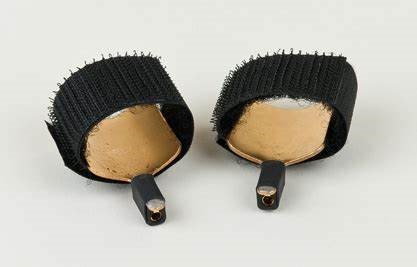
Overview
Finger electrodes are a part of a polygraph machine that is used to measure the subject's electrodermal activity (EDA) during the test. They are placed on the fingers and measure changes in sweat gland activity as a response to questions.
Usage
Before the test begins, the examiner will attach the finger electrodes to the subject's fingers and connect them to the polygraph machine. During the test, the examiner will ask the subject a series of questions and the machine will record changes in the subject's EDA.
Specifications
- Material: Silver-silver chloride electrodes
- Size: Standard adult size
- Color: White
Maintenance
After each use, the finger electrodes should be cleaned with a mild disinfectant solution and allowed to air dry. The electrodes should be stored in a cool, dry place.
Pneumo Assembly Description
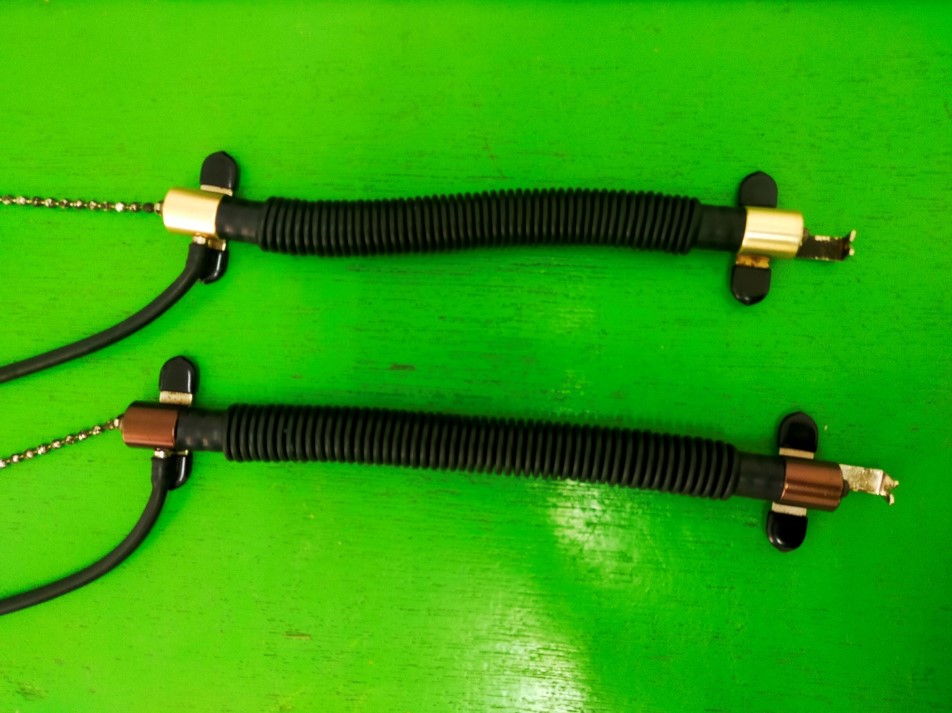
Overview
The Pneumo Assembly is a part of a polygraph machine that is used to measure the subject's respiration during the test. It consists of a pneumo chest strap and a transducer that converts chest movement into electrical signals.
The Convoluted Hollow Rubber Tube or Corrugated Rubber Tube is a flexible tube made of rubber that connects different parts of the polygraph machine. It is usually used to connect the pneumo assembly to the chest plate.
Usage
Before the test begins, the examiner will wrap the pneumo chest strap around the subject's chest and connect it to the polygraph machine. During the test, the transducer will measure the subject's chest movements and convert them into electrical signals, which are recorded by the machine.
The tube is used to transfer air pressure between different components of the polygraph machine. During a polygraph test, the examiner uses the tube to monitor the breathing pattern of the subject.
Specifications
- Material: Nylon fabric with rubber bladder
- Size: Standard adult size (fits chest circumference up to 48 inches)
- Color: Black
Maintenance
After each use, the Pneumo Assembly should be cleaned with a mild disinfectant solution and allowed to air dry. The bladder should be checked for leaks and the assembly should be stored in a cool, dry place.
Pump Bulb Description
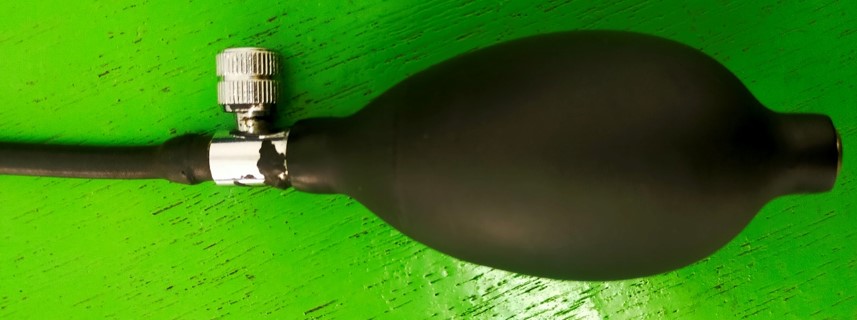
Overview
The Pump Bulb is a part of a polygraph machine that is used to inflate the pneumatic components of the machine. It is typically made of rubber and is used to create pressure in the system.
Usage
During a polygraph test, the examiner will use the Pump Bulb to inflate the Arm Cuff and Pneumo Assembly to the appropriate pressure. The Pump Bulb is connected to the polygraph machine and allows the examiner to inflate and deflate the components as needed.
Specifications
- Material: Rubber
- Color: Black
Maintenance
After each use, the Pump Bulb should be cleaned with a mild disinfectant solution and checked for any signs of wear or damage. If the Pump Bulb shows any signs of wear, it should be replaced immediately.
Sphygmomanometer Dial Description
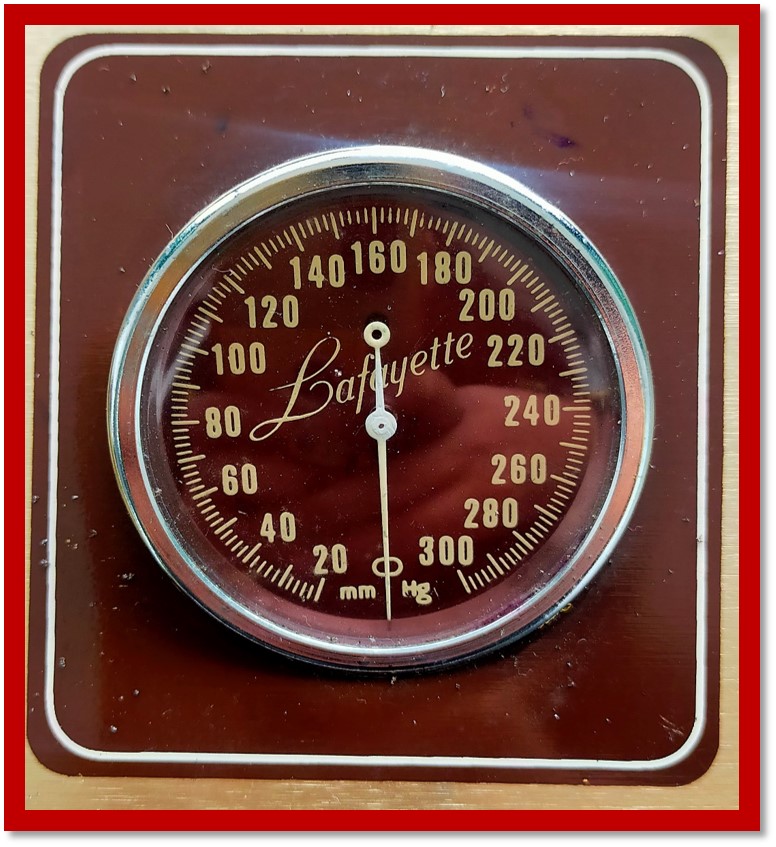
Overview
The Sphygmomanometer Dial is a part of a polygraph machine that measures blood pressure. It consists of a circular dial with a needle that indicates the pressure in millimeters of mercury (mmHg).
Usage
During a polygraph test, the examiner will use the Sphygmomanometer Dial to measure the blood pressure of the test subject. The examiner will place the Arm Cuff around the subject's arm and inflate it using the Pump Bulb. The examiner will then use a stethoscope to listen to the subject's pulse and slowly release the pressure in the Arm Cuff while monitoring the Sphygmomanometer Dial for the systolic and diastolic pressures.
Specifications
- Measurement Range: 0-300 mmHg
- Accuracy: +/- 3 mmHg
- Dial Size: 60 mm diameter
Maintenance
The Sphygmomanometer Dial should be cleaned with a mild disinfectant solution after each use. The needle and dial should also be checked for accuracy periodically and adjusted if necessary.
Ink Bottle

Overview
The Ink Bottle is a small container that holds the ink used by the polygraph machine. It is typically made of glass or plastic.
Usage
The ink in the bottle is used to write on the paper that moves through the chart drive system of the polygraph machine. The ink bottle is connected to the pen holder and pen cradle.
Specifications
- Material: Glass or plastic
- Capacity: Varies
Maintenance
The ink bottle should be checked regularly for any leaks or cracks. If any leaks or cracks are found, the ink bottle should be replaced immediately. The ink in the bottle should be replenished as needed.
Foam Pen Hold Down
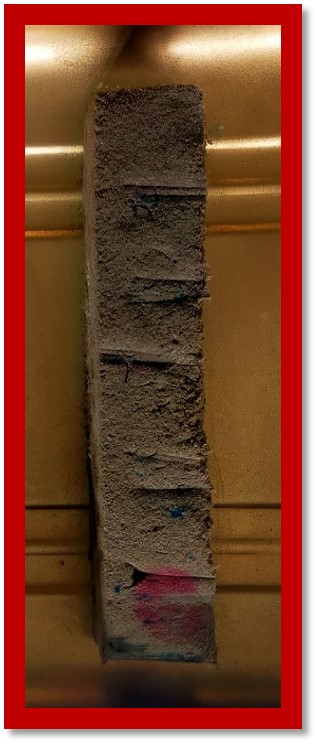
Overview
The Foam Pen Hold Down is a small foam block that holds the pen in place in the pen holder.
Usage
The Foam Pen Hold Down is used to keep the pen in place during the polygraph test. It is placed in the pen holder before the pen is inserted.
Specifications
- Material: Foam
- Dimensions: Varies
Maintenance
The Foam Pen Hold Down should be checked regularly for any signs of wear or damage. If any wear or damage is found, it should be replaced immediately..
Vent Knob

Overview
The Vent Knob is a small knob located on the pneumo assembly of the polygraph machine.
Usage
The Vent Knob is used to release the air pressure from the pneumo assembly. It is typically used at the end of a polygraph test to deflate the Arm Cuff and Pneumo Assembly.
Specifications
- Material: Plastic or metal
- Dimensions: Varies
Maintenance
The Vent Knob should be checked regularly for any signs of wear or damage. If any wear or damage is found, it should be replaced immediately.
Sensitivity Knob
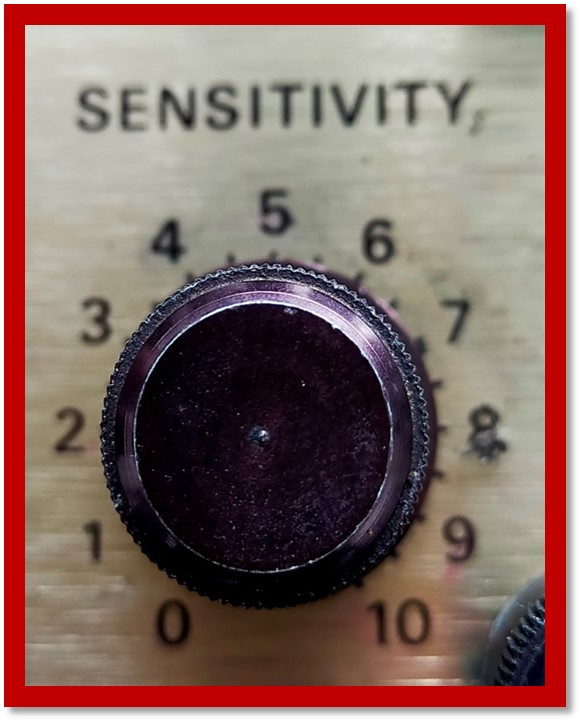
Overview
The Sensitivity Knob is a small knob located on the polygraph machine control panel.
Usage
The Sensitivity Knob is used to adjust the sensitivity of the polygraph machine. It is typically used to adjust the sensitivity of the pneumograph and galvanograph channels.
Specifications
- Material: Plastic or metal
- Dimensions: Varies
Maintenance
The Sensitivity Knob should be checked regularly for any signs of wear or damage. If any wear or damage is found, it should be replaced immediately.
Chart Drive Button
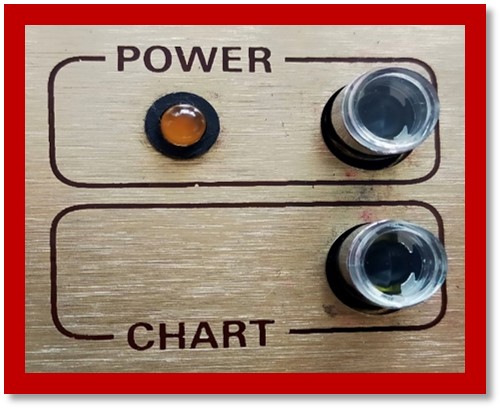
Overview
The Chart Drive Button is a small button located on the chart drive system of the polygraph machine.
Usage
The Chart Drive Button is used to start and stop the movement of the paper through the chart drive system.
Specifications
- Material: Plastic or metal
- Dimensions: Varies
Maintenance
The Chart Drive Button should be checked regularly for any signs of wear or damage. If any wear or damage is found, it should be replaced immediately.
Connection Ports
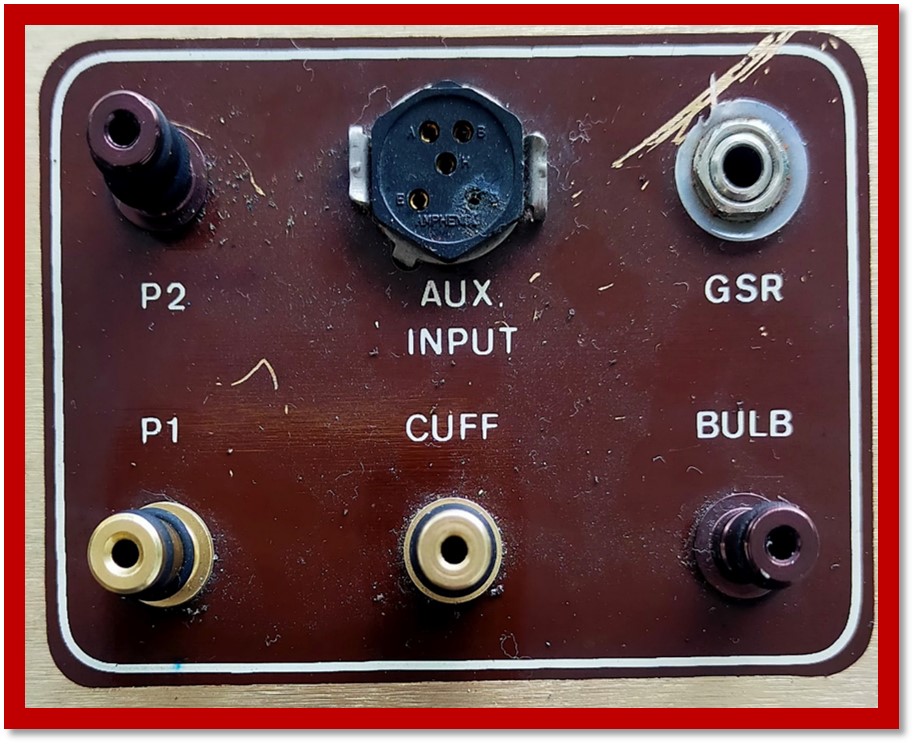
Overview
The Connection Ports are small openings on the polygraph machine that allow for the connection of various components.
Usage
During a polygraph test, the examiner will connect the necessary components to the appropriate connection ports in order to collect data from the subject. The ports may be labeled to ensure that the correct cables or wires are connected to the correct component.
Specifications
- Material: Plastic or metal
- Dimensions: Varies
Maintenance
The Connection Ports should be regularly checked for any signs of damage or wear. Any damaged or malfunctioning ports should be repaired or replaced by a qualified technician.
Valve

Overview
The Valve is a small component of the polygraph machine that is used to control the flow of air or fluid through the machine. It may be made of metal, plastic, or other materials.
Usage
The Valve is typically used to control the pressure of the air or fluid that is used to inflate the Pneumo Assembly or other components of the machine. The examiner can adjust the Valve to increase or decrease the pressure as needed during the test.
Specifications
- Material: Plastic or metal
- Dimensions: Varies
Maintenance
The Valve should be regularly checked for any signs of wear or damage. It should be cleaned and lubricated as needed to ensure that it operates smoothly and effectively.
Beaded Chain
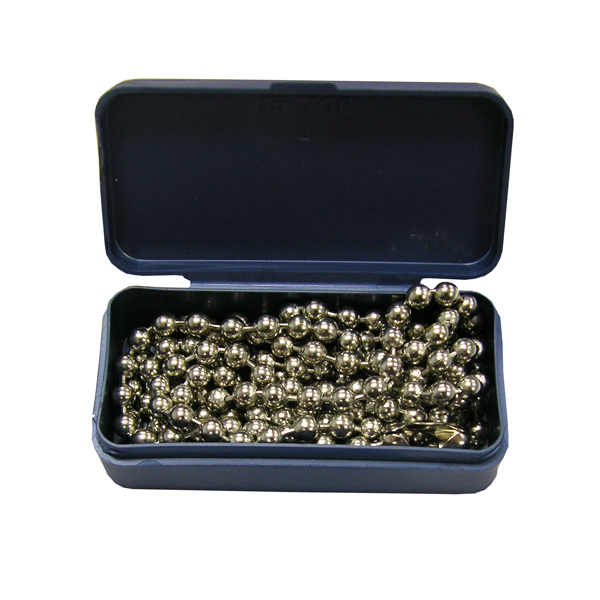
Overview
The Beaded Chain is a small chain that is used to connect the Pen Holder to the Chartdrive Roller. It is typically made of metal or plastic.
Usage
During a polygraph test, the Beaded Chain allows the Pen Holder to move along with the Chartdrive Roller, ensuring that the pen stays in contact with the chart paper.
Specifications
The specifications for the Beaded Chain will depend on the specific polygraph machine model. They may vary in length, material, and design depending on the machine's configuration.
Maintenance
The Beaded Chain should be regularly checked for any signs of wear or damage. It should be cleaned and lubricated as needed to ensure that it moves smoothly and effectively.
Paper Guide
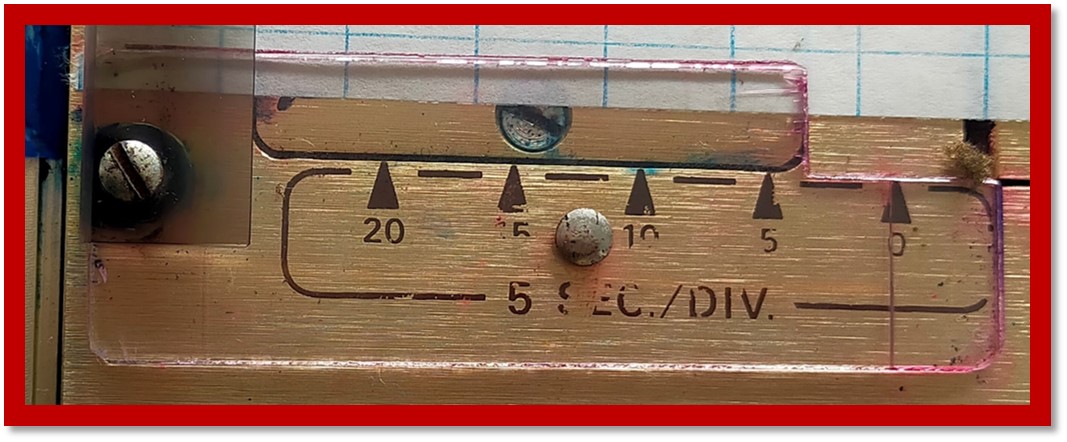
Overview
The Paper Guide is a small component of the polygraph machine that is used to guide the chart paper as it moves through the machine. It may be made of metal or plastic.
Usage
The Paper Guide is typically used to ensure that the chart paper moves smoothly and evenly through the machine, preventing jams or other issues. It may be adjustable to accommodate different sizes of chart paper.
Specifications
- Material: Typically made of metal or plastic
- Color: Often silver or gray
- Dimensions: Varies depending on the machine, but typically designed to fit standard polygraph paper
- Shape: Usually rectangular with a curved edge to help guide the paper
- Mounting: Attached to the top of the machine with screws or other fasteners
- Adjustment: May have adjustable side guides to help keep the paper aligned
Maintenance
The Paper Guide should be regularly checked for any signs of wear or damage. It should be cleaned and lubricated as needed to ensure that it operates smoothly and effectively.
Pen Cradle
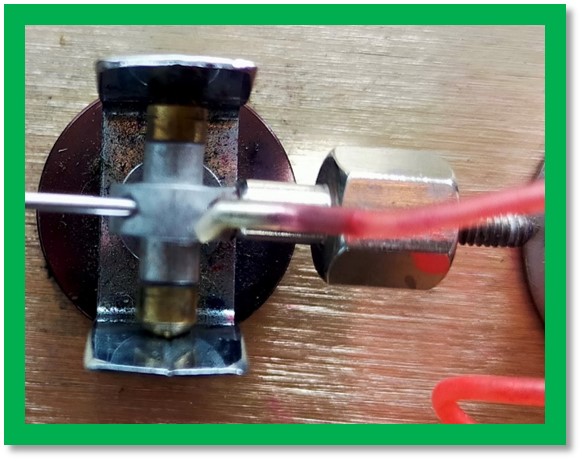
Overview
The Pen Cradle is a part of a polygraph machine that holds the pen in place. It is typically made of plastic or metal and is designed to securely hold the pen while it is in use.
Usage
During a polygraph test, the examiner will place the pen in the Pen Cradle to ensure that it stays in place while recording data on the chart paper. The Pen Cradle is designed to hold the pen securely so that it does not move or wobble during the test.
Specifications
- Material: Plastic or metal
- Color: Black or silver
Maintenance
After each use, the Pen Cradle should be cleaned with a mild disinfectant solution and checked for any signs of wear or damage. If the Pen Cradle shows any signs of wear or damage, it should be replaced immediately to ensure that the pen is held securely during future tests.
Pen Holder
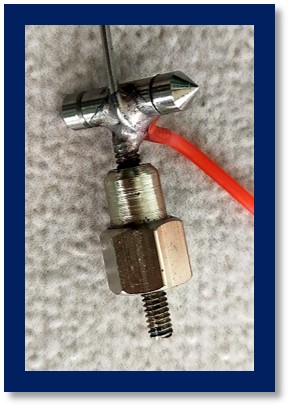
Overview
The Pen Holder is a part of a polygraph machine that is used to hold the pen in place. It is typically made of plastic and can be adjusted to hold different types of pens.
Usage
During a polygraph test, the examiner will insert the pen into the Pen Holder and adjust it as needed to ensure the pen is held securely in place.
Specifications
- Material: Plastic
- Adjustable: Yes
Maintenance
After each use, the Pen Holder should be checked for any signs of damage or wear. If the Pen Holder is damaged, it should be replaced immediately.
Paper Tear Bar/ Paper Cutter

Overview
The Paper Tear Bar, also known as the Paper Cutter, is a part of a polygraph machine that is used to cut the paper after a test is completed. It is typically made of metal and has a sharp edge to cut the paper cleanly.
Usage
After a test is completed, the examiner will use the Paper Tear Bar to cut the paper along a perforated line.
Specifications
- Material: Metal
- Sharp Edge: Yes
Maintenance
After each use, the Paper Tear Bar should be checked for any signs of damage or wear. If the Paper Tear Bar is damaged, it should be replaced immediately.
Pen Lifter

Overview
The Pen Lifter is a part of a polygraph machine that is used to lift the pen off the paper when the test is complete. It is typically made of metal and has a small lever to lift the pen.
Usage
After a test is completed, the examiner will use the Pen Lifter to lift the pen off the paper and prevent any further marks from being made.
Specifications
- Material: Metal
- Lever: Yes
Maintenance
After each use, the Pen Lifter should be checked for any signs of wear or damage. If the lever is loose or not functioning properly, it should be repaired or replaced. The Pen Lifter should also be kept clean and free of any debris or ink buildup that could affect its functionality.
Chartdrive Roller
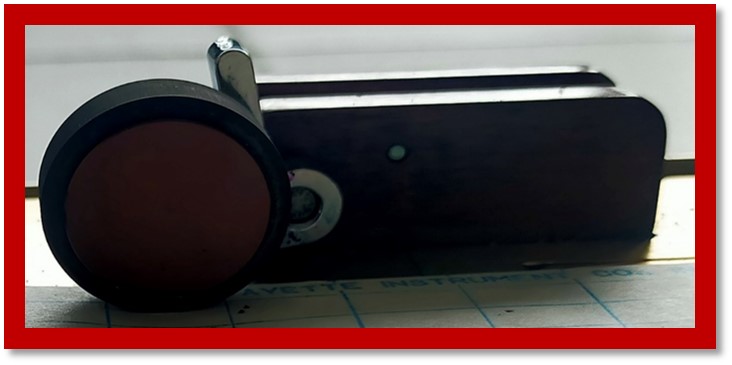
Overview
The Chartdrive Roller is a part of a polygraph machine that is used to move the paper chart through the machine during the testing process. It is typically made of metal and has a rubber lining to provide traction on the paper.
Usage
During a polygraph test, the Chartdrive Roller moves the paper chart through the machine at a steady pace. The roller is driven by the Chartdrive Motor and is responsible for maintaining the tension on the paper to ensure accurate chart recordings.
Specifications
- Material: Metal with rubber lining
- Size: Varies depending on the machine model
- Weight: Varies depending on the machine model
Maintenance
After each use, the Chartdrive Roller should be wiped clean with a dry cloth to remove any debris or ink residue. The rubber lining should also be checked for signs of wear or damage, and should be replaced if necessary.
Storage Compartment

Overview
The Storage Compartment is a part of a polygraph machine that is used to store extra paper charts and pens for the machine. It is typically located on the side or back of the machine and may have a locking mechanism to secure the contents.
Usage
The Storage Compartment provides a convenient location to store additional paper charts and pens for the machine. This allows the examiner to quickly replace a chart or pen during a test without having to leave the room to retrieve them.
Specifications
- Location: Side or back of machine
- Size: Varies depending on machine model
- Locking Mechanism: May have a locking mechanism to secure contents
Maintenance
The Storage Compartment should be checked periodically to ensure that it is securely attached to the machine and that the locking mechanism is functioning properly. The compartment should also be cleaned regularly to remove any dust or debris that may have accumulated.
Pen
Overview
The Pen is a part of a polygraph machine that is used to record the subject's physiological responses on the paper chart. It is typically a ballpoint pen that is attached to the pen arm of the machine.
Usage
During a polygraph test, the Pen is used to record the subject's physiological responses such as changes in breathing, heart rate, and sweat gland activity on the paper chart. The examiner will attach the pen to the pen arm and adjust its position to ensure accurate recording.
Specifications
- Type: Ballpoint Pen
- Ink Color: Black
Maintenance
After each use, the Pen should be removed from the pen arm and checked for any signs of damage or wear. If the ink runs out or becomes smudged, the Pen should be replaced with a new one. It is recommended to use a high-quality ballpoint pen for accurate and consistent recording.
Paper Well
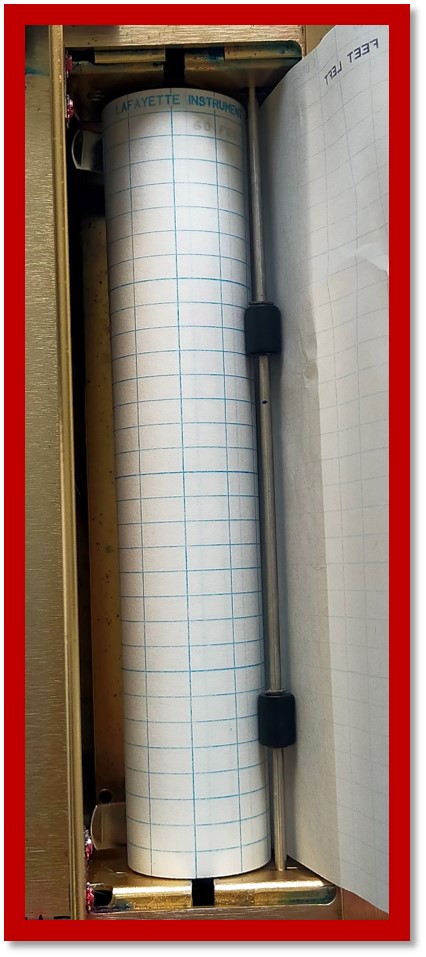
Overview
The Paper Well is a part of a polygraph machine that holds the paper chart in place during the test. It is typically a plastic or metal tray that is attached to the machine.
Usage
The examiner will load the paper chart into the Paper Well before starting the test. The Paper Well holds the chart securely in place and allows it to move smoothly through the machine.
Specifications
- Material: Plastic or metal
- Size: Designed to fit standard polygraph paper charts
Maintenance
The Paper Well should be cleaned after each use to remove any dust or debris that may have accumulated. Any damage or wear to the Paper Well should be repaired or replaced immediately.
Chartdrive Roller Lever
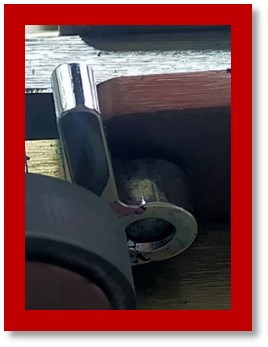
Overview
The Chartdrive Roller Lever is a part of a polygraph machine that controls the movement of the chart paper through the machine. It is typically a small lever that is attached to the machine.
Usage
The examiner can use the Chartdrive Roller Lever to adjust the speed at which the chart paper moves through the machine. This can be useful for controlling the pace of the test or for reviewing specific sections of the chart.
Specifications
- Material: Metal or plastic
- Lever: Yes
Maintenance
The Chartdrive Roller Lever should be checked for any signs of wear or damage after each use. Any issues should be repaired or replaced immediately to ensure accurate test results.
Pen Lifter Bar
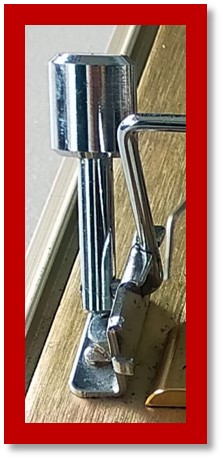
Overview
The Pen Lifter Bar is a part of a polygraph machine that is used to lift the pen off the paper at the end of a test. It is typically made of metal and has a small notch that the Pen Lifter engages with to lift the pen.
Usage
When the test is complete, the examiner will use the Pen Lifter to lift the pen off the paper. The Pen Lifter Bar is designed to work in conjunction with the Pen Lifter to ensure that the pen is lifted off the paper without damaging the chart.
Specifications
- Material: Metal
- Notch for Pen Lifter engagement: Yes
Maintenance
After each use, the Pen Lifter Bar should be checked for any signs of wear or damage. If there are any issues, the part should be replaced immediately.
Ejector
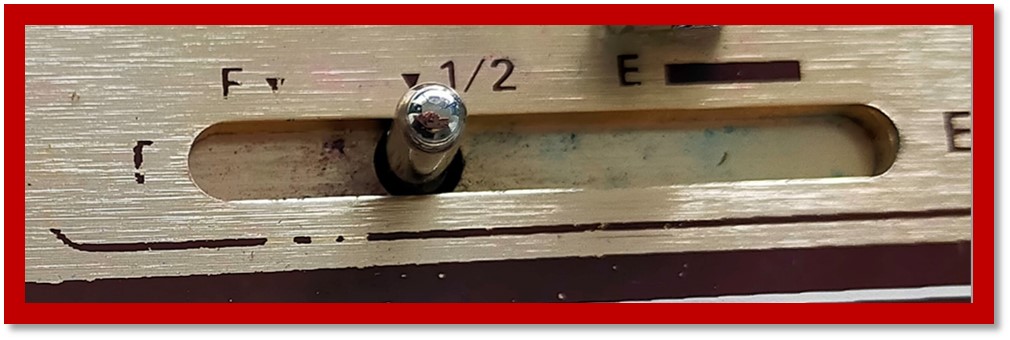
Overview
The Ejector is a part of a polygraph machine that is used to eject the used chart paper from the machine. It is typically made of plastic and is located on the side of the machine.
Usage
After a test is completed, the examiner will use the Ejector to eject the used chart paper from the machine.
Specifications
- Material: Plastic
- Location: Side of the machine
Maintenance
After each use, the Ejector should be checked for any signs of wear or damage. If the Ejector shows any signs of wear, it should be replaced immediately.
Capillary Tube
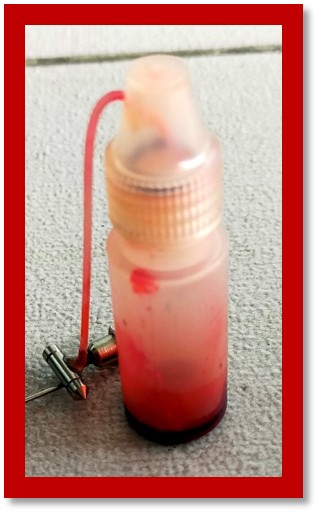
Overview
The Capillary Tube is a part of a polygraph machine that is used to record the subject's blood pressure. It is typically a thin tube made of glass or plastic that is attached to the Pneumo Assembly of the machine.
Usage
During a polygraph test, the Capillary Tube is used to measure the subject's blood pressure by connecting it to the Pneumo Assembly of the machine.
Specifications
- Material: Glass or plastic
- Location: Pneumo Assembly of the machine
Maintenance
After each use, the Capillary Tube should be cleaned with a mild disinfectant solution and checked for any signs of wear or damage. If the Capillary Tube shows any signs of wear or damage, it should be replaced immediately.




